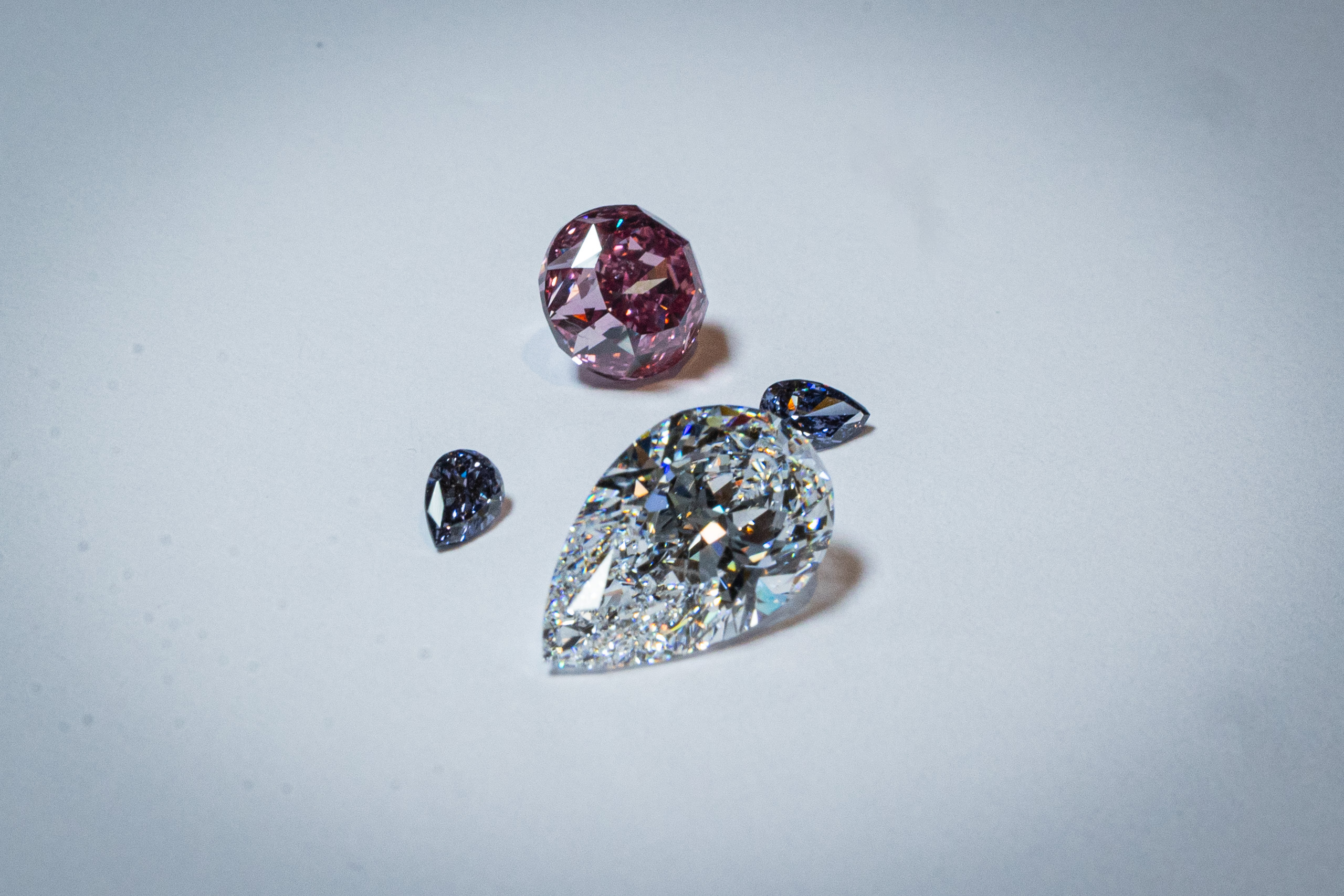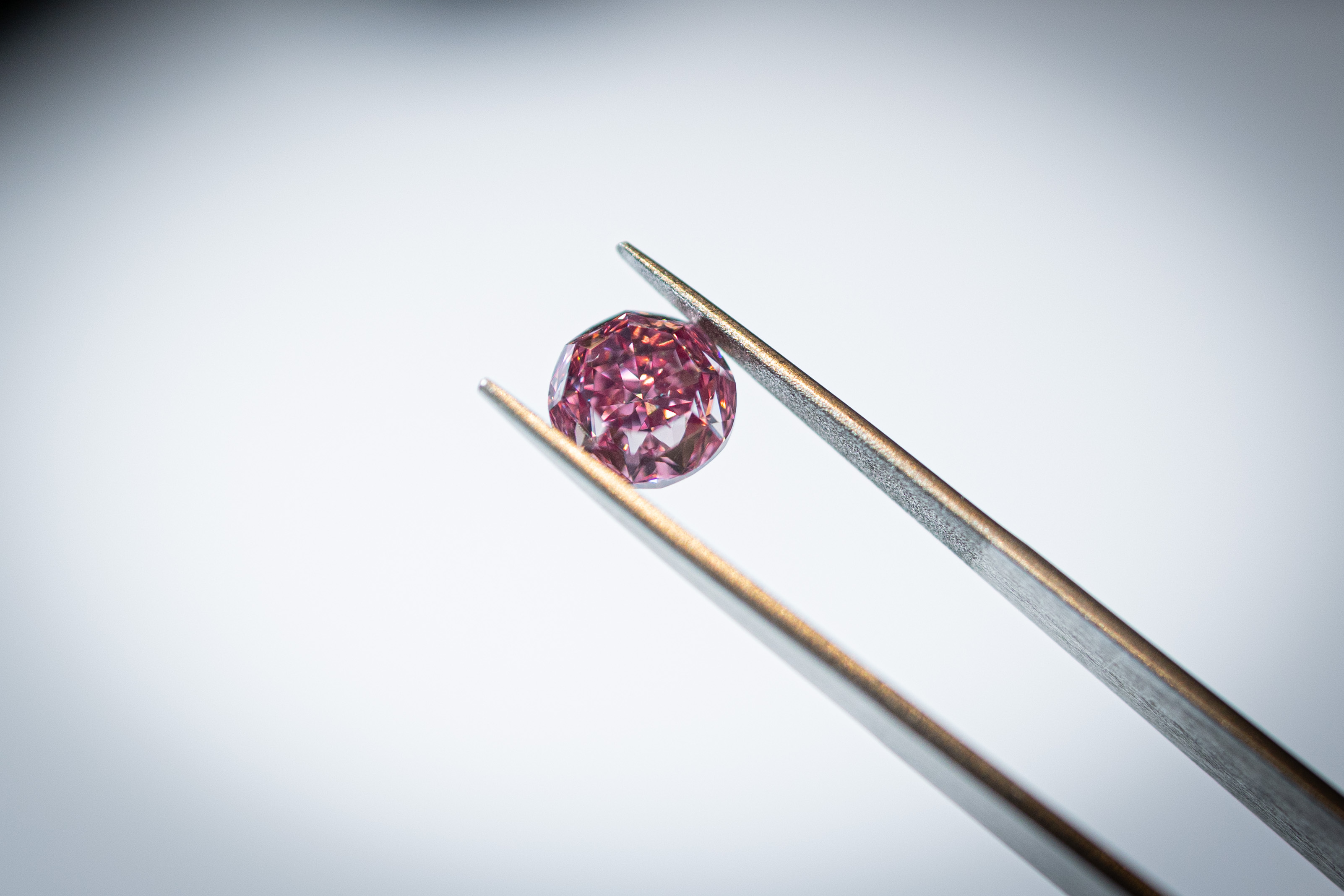Rio Tinto to Auction Final Argyle Red Diamonds as Mine Closes
In a significant development for the diamond industry, explorers backed by Rio Tinto uncovered a remarkable deposit of diamonds in 1979 in a remote creek leading to Lake Argyle, Western Australia. This discovery would lead to the largest collection of coloured diamonds ever identified.
Since the early 1980s, the Argyle diamonds—most notably pink, but also including blue, brown, and rare red—have transformed perceptions in the market. Jewelry historian Vivienne Becker stated that the distinct pink hue and quantity were unprecedented at the time, highlighting their ongoing rarity.
After 37 years of operation, Rio Tinto’s Argyle mine ceased production in 2020, yielding approximately 900 million carats during its lifespan.
This week marks a pivotal moment as bids have opened for 48 lots of pink and grey-violet diamonds, including the last of the exceptional red stones, at what may be one of the final Argyle diamond auctions.
With the mine now retired, the auction will feature seven lots referred to as the “Old Masters,” which have been safely stored by collectors for decades and are now making their way back to market.
The exclusive “Beyond Rare” auction is invitation-only, with viewing events kick-starting in London before the diamonds are showcased in key global locations, including Singapore and Antwerp, concluding with sealed bids due by November 18.
This discreet approach is designed to cater to a select clientele, from luxury jewelers to private collectors representing the ultra-wealthy. Participants usually possess specialized knowledge in diamond appraisal that is uncommon in public auctions.

According to Patrick Coppens, a sales and marketing expert at Rio Tinto’s diamond division, the value disparity between shades of pink and red can result in differences of hundreds of thousands to millions of dollars.
At its peak in 1994, the Argyle mine produced an astonishing 42.8 million carats in a single year, representing around 40 percent of global diamond output by volume during the mid-1990s. Impressively, even though pink diamonds accounted for only 0.1 percent of the total production, Argyle generated approximately 90 percent of all pink diamonds ever discovered.
Entire production of Argyle’s pink diamonds could fit in the palm of a hand, while blue diamonds are the rarest. The coveted red diamonds, of which only 20 were ever mined, are particularly sought after for their rich color.
Unlike other colored gemstones that derive their hues from chemical reactions, the pink shades of Argyle diamonds are attributed to pressure-induced distortions in their crystal structure during formation, making them relatively brittle and necessitating innovative cutting techniques for preservation.

The largest diamond available for sale in this auction is a 2.63-carat purple-pink stone, described as an “old master.” Jody Wainwright, managing director of Boodles, a luxury jewelry brand, expressed excitement about this piece of history, emphasizing a growing trend where historically high prices have consistently continued to rise.
Typically, Argyle diamonds fetch between 20 and 25 times the price of comparable white diamonds. The highest auction price for a diamond was a staggering $71.2 million in 2017 for a vivid-pink stone weighing 59.6 carats.
Due to their unique rarity, Argyle diamonds have been largely insulated from the negative impact of the lab-grown diamond market and the decline in luxury spending that has affected white diamond prices.
In contrast, De Beers, Rio Tinto’s FTSE 100 competitor, saw a 25 percent price drop last year and has scaled back production in response to weak demand.
Kaufman noted that the economics surrounding Argyle diamonds differ significantly from those of smaller white or lab-grown alternatives, underlining their unique status in the market.
Reflecting on past market dynamics, Rio Tinto pointed to a record-setting diamond sale held on the day Lehman Brothers went bankrupt in 2008, illustrating that diamonds can maintain value despite financial turmoil.
As demand shifts with economic growth, emerging markets have expanded from Japan to include America, the Middle East, and China, demonstrating the enduring global appeal of diamonds.
Currently, Rio Tinto operates only the Diavik mine in Canada, which primarily produces white and some yellow diamonds. Despite current market challenges, the company is still exploring opportunities for new diamond mines, although finding viable deposits is becoming increasingly difficult.
“We have a long-term perspective after more than 150 years in the industry, but identifying new diamond sources is growing more challenging,” Kaufman concluded.




Post Comment